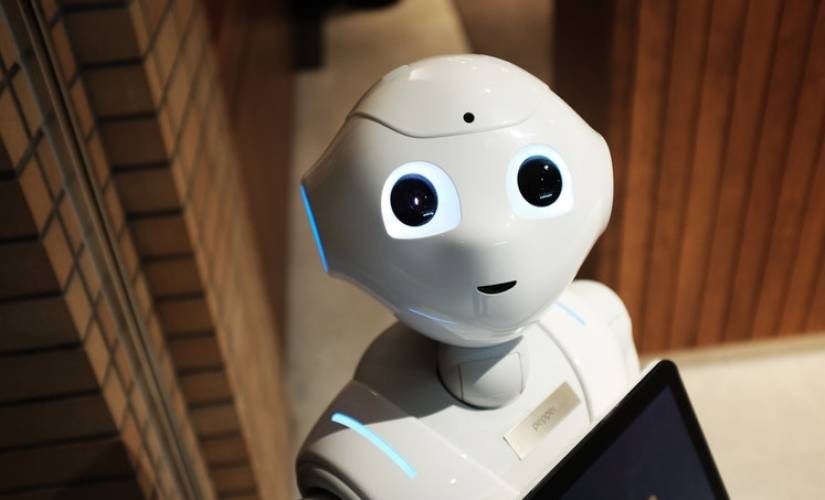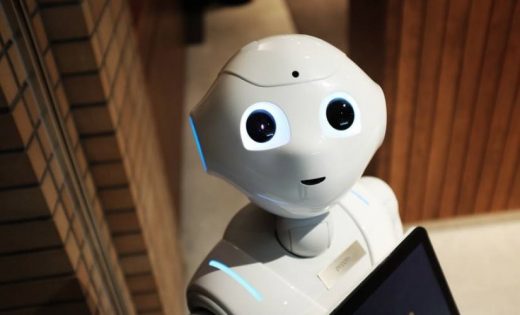How Much of Your Home Life Will Be Automated in 2030?
How Much of Your Home Life Will Be Automated in 2030?

Automation is already taking over your home and your workplace. We’re using complex algorithms to handle back-end processes, and we have in the tech industry for many years, but now users are starting to create their own mini algorithms. For example, if you have a smart home device like a smart thermostat, you may have it set to raise the temperature around 5 pm, in anticipation of you getting home from work, but lower the temperature around 8 am, when you leave for work.
This is automation—taking care of the tasks you’d do otherwise, without your manual input. And as you might suspect, a greater portion of your life is going to be automated in the future as new apps, new devices, and other kinds of new technology emerge.
But exactly how much of your home life will be automated by 2030? And is that level of automation a good thing?
The Problem With Defining Automation
When you think of automation, you probably imagine a robot taking care of the housework for you, or a TV wiping itself down like it’s out of a Jetsons cartoon. But automation isn’t always so overt. In fact, it tends to creep up in our lives slowly until we take it for granted; in fact, you could feasibly include your alarm clock, an invention that’s been around since 1787, as a form of automation.
It’s also hard to define automation because it’s hard to say how much human input is necessary to negate the definition. For example, if you make a manual tweak to your automated thermostat cycle, is that no longer considered automation? What if you only use the automated temperature cycling one day a week?
With that in mind, we need to be careful about how we talk about automation in the home environment.
What’s Hard to Automate
Instead of thinking of all the things that could be automated in 2030, it’s easier to list all the things that would be extraordinarily difficult to automate by 2030. While the pace of technological development is always increasing (and breakthroughs are hard to predict), there are still some significant challenges in the fields of AI and automation. If we study these unique challenges, it should be easy to guess which elements of your home life will remain untouched by automation for the foreseeable future.
- Force control. For starters, robots have significant trouble trying to exert precision force control. As a human being, force control is so intuitive we don’t realize how complex it really is. We’re able to pick up a small, fragile glass in a manner that’s firm enough to hold it in place by soft enough not to break it. We’re also able to squeeze a stress ball as tightly or as loosely as we want. But for a robotic agent, this is incredibly difficult, especially in an environment that’s always changing, or when dealing with objects of variant fragility. Accordingly, tasks that require some degree of force precision, like mixing drinks or grooming the dog, are unlikely to be automated for some time.
- Complex or multi-faceted tasks. Similarly, tasks that require multiple steps, or rely on some complex level of understanding are unlikely to be automated. It’s straightforward to develop a machine or an app that can do one specific thing—like control the heating and cooling units of your home. But for something more complex, like cleaning the house, there are many individual steps involved and many physical skills that are required to do the job. In the meantime, you’ll have to clean your own house, or hire another human being to do it.
- Tasks that require a communication interface. Some tasks require some communication interface to be automated successfully; for example, a robot attempting to complete some task may make a call to a succession of other machines to determine whether it’s appropriate to take a specific action. This is important for data-intensive applications and for precision work that needs information from multiple other units to be executed properly.
- Tasks with multiple conditions. It’s simple to create an algorithm with a binary input and output; for example, a paper towel dispenser will provide a towel if it senses a hand and will not operate if it doesn’t. By contrast, it’s hard to create an algorithm with multiple interconnected conditional requirements. The more variables you have controlling the need or direction of a given task, the harder that task will be to automate.
- Personal interaction. Of course, AI has always had a problem replicating personal interaction, or substituting our need for human interaction. This is a more complicated issue, reaching far beyond the limitations of pure automation, but it’s still worth considering. While many modern jobs stand to be automated by 2030, any job that requires some degree of human-to-human contact or interaction (like therapy or social work) is likely safe. The same is true of personal interaction in your home life, though it’s unlikely you’d want to automate that in the first place.
What You Can Expect
So what kinds of automation can you expect to come to your home in the next 10 years or so?
- Sensors everywhere. First, you can expect your home to have sensors everywhere, provided you consent to having them. They’ll study your patterns of your behavior, and take note of different environmental changes—like the number of dust particles in the air. Some of these data will be used to automate tasks directly. Other data will be collected and used by smart home tech companies trying to solve more complex automation problems; the more data they have to analyze, the closer they’ll get to finding a proper solution.
- Lighting changes. Lighting is one of the most ubiquitous household features, and it usually has only a binary output; the light is either off or on. We already have some tricks and technologies to help us automate out lighting, such as timers that turn lights on at a given time or sensors that turn lights on when we’re in a room, but these aren’t typically convenient for the average homeowner because schedules and needs can be unpredictable. More refined controls and behavioral predictions could revolutionize this within the next few years.
- New kitchen protocols. Many kitchen-related and kitchen-adjacent activities, like cooking, shopping for groceries, and some types of cleanup, could soon be automated—or at least partially automated. While this would require the interaction of multiple devices and apps to collect the data necessary to make a decision, the output actions (like adjusting the oven to a certain temperature) aren’t particularly complex.
- Health-related notifications. The healthcare industry is one of the most likely fields to enter the IoT space, giving patients remote monitoring devices and more opportunities to get the care they need without coming into the doctor’s office or hospital. Accordingly, our home lives may soon provide us with more helpful automation to keep us in good health, like intelligent reminders to take certain medications, or notifications when certain biomarkers are falling below or rising above certain thresholds.
- Recommendations over tasks. Rather than wholly automating our home lives, it’s likely that automation and algorithms will prioritize making recommendations. For example, rather than simply turning the lights off at a certain time or playing a certain movie based on our preferences, algorithms would give us a prompt to take these actions, giving us a final stage of input before taking a specific course of action. Incidentally, this could also go a long way in making technophobes feel more comfortable integrating new technologies into their home lives.
Automation and AI still have a long way to go before they completely take over our jobs and our home lives, but the smart home revolution has already begun. Don’t expect your 2030 home to be radically different than the home you enjoy today; while there are many novel features that could be automated or partially automated within the next few years, there are significant challenges in the way of more advanced functionalities.
The post How Much of Your Home Life Will Be Automated in 2030? appeared first on ReadWrite.
(19)


